After The Heart Is “cleansed Of Blood And All Cells”, Only Connective Tissues Remain. This Is Ideal

After the heart is “cleansed of blood and all cells”, only connective tissues remain. This is ideal for doing heart transplants because the recipient’s immune system is less likely to reject the ghost heart if it has no trances of the donor’s body. [Image via http://bit.ly/2izEnse]
More Posts from Contradictiontonature and Others
Molecule of the Day: Limonene


d-Limonene (C10H16) is a naturally occurring, chiral cyclic hydrocarbon with an orangey scent, and is found in citrus peels and citrus essential oils. It is a colourless liquid that is immiscible with water at room temperature and pressure.
Limonene undergoes reactions typical of an alkene, such as electrophilic addition and oxidative cleavage. It is biosynthesised from geranyl pyrophosphate in plants, and is classified as a terpene.

While limonene can be synthesised in the lab, as shown below, it is produced industrially from the steam distillation of citrus peels due to its natural abundance. Furthermore, citrus peels are a by-product of orange juice manufacturing, which makes it environmentally-friendly.

Limonene is commonly used in perfumes, soaps, and foods due to its fresh, citrus-like scent, and can also act as a pesticide. It is gaining prominence as an environmentally-friendly solvent and paint stripper. However, it is also a skin sensitiser, as it can dissolve the oils and fat underneath the skin!

Links:
Extraction of limonene from orange peels - YouTube
Dissolving styrofoam using limonene - YouTube

Quote from #JaneGoodall primatologist and anthropologist. More quotes like this to inspire you in my new journal I Love Science, in stores March but ready for preorder now! #womeninscience #ilovescience #anthropology #scientificliteracy

R.I.P. Dr. Vera Rubin
As I write this, reports are spreading rapidly through the astronomy community of the death of Dr. Vera Rubin on December 25, 2016. If you don’t know who she was, or what she worked on, come sit by me and let me tell you a story about this lady.
It was at one of the first meetings of the American Astronomical Society I attended. I was a graduate student and giving a talk about outreach and amateur astronomy. I was scared to death because, hey, it was me, a lowly student giving a talk to all these exalted astronomers. A woman sat in the front row and smiled at me as I shuffled the papers on the podium. The room filled and then the session chair gave me the signal that my 10 minutes had started. I plunged into my talk.
At the end, a few people asked questions, everyone clapped politely, and the next person stepped up to the podium. I fled the room to catch my breath. The woman followed me out and asked if I’d like to get a cup of coffee. At the same moment my advisor came out and said, “Oh, I see you’ve met Vera Rubin”, and he proceeded to introduce me to her before being collared by someone else for a chat. Dr. Rubin and I went to get coffee, and for the next 30 minutes or so she asked me all about my work and what I hoped to do when I graduated. It was a wonderful experience.
Over the years we met here and there, and I learned more about her work with galaxy rotation studies and the existence of dark matter. I found it fascinating, as so many people do, and followed her research with interest. When I was asked to write a book about astronomy, one of the directions I got from the editors was to include some bios of “seminal” astronomers. Dr. Rubin was one of those I chose. In retrospect, I wish could have done a book on her work instead of simply a chapter.
I know that Vera Rubin didn’t work in a vacuum on dark matter — that, like Newton and every other astronomer has done — she stood on the shoulders of giants. Her work forged a new path in understanding dark matter and its affect on the universe. Now, she is a giant in her own right. Now, others will stand on her shoulders. Her insights and drive to understand the difficult “galaxy rotation problem” led directly to the theory of dark matter, and more recently to the confirming observations of its existence. It was a monumental achievement.
For her work, Dr. Rubin should have received a Nobel Prize. That didn’t happen and the Nobel physics committee should be thinking hard about why she was overlooked. She has been honored with many other prizes and awards for her insights, and she will be long remembered for her seminal contributions to astronomy.
RIP Dr. Vera Rubin, and deepest condolences to her extended family.
C.C. PETERSEN is a science writer and media producer specializing in astronomy and space science content.
Source: The Spacewriter

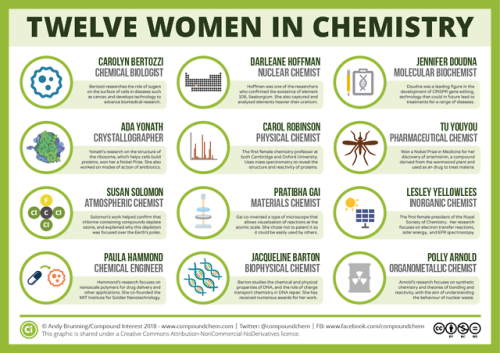
For International Women’s Day, here are 12 women from chemistry history: wp.me/p4aPLT-2ra and 12 from chemistry present: wp.me/p4aPLT-5w7

Clear as Day
The more light your eyes can take in, the better the picture you see, and the lens at the front of your eye is transparent to help this. Most body cells contain lots of membranes – they have important roles like manufacturing cellular components, but they scatter light and aren’t transparent. Cells in the lens become transparent by losing all but their most vital internal membranes as they develop and move towards the middle of the lens: the central cells (shown here in a chick’s eye) are flatter, with rounder nuclei (blue). It wasn’t known how the membranes were lost until recently, when scientists discovered a structure called the excisosome. This forms inside cells and breaks down the membranes, possibly by stripping them apart into the proteins and lipids they’re made of. Current research implies that excisosomes form in the lenses of all animals, helping us understand how our eyes develop.
Written by Esther Redhouse White
Image from work by M.Joseph Costello and colleagues
Department of Cell Biology and Physiology, University of North Carolina, Chapel Hill, NC, USA
Image originally published under a Creative Commons Licence (BY 4.0)
Published in PLOS One, August 2016
You can also follow BPoD on Twitter and Facebook
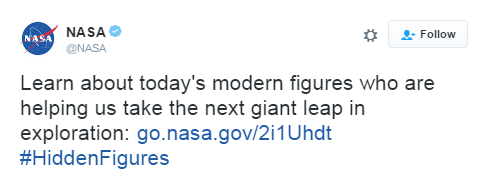
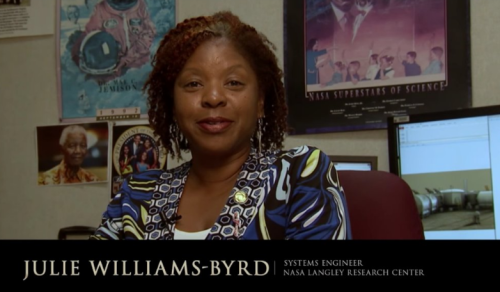
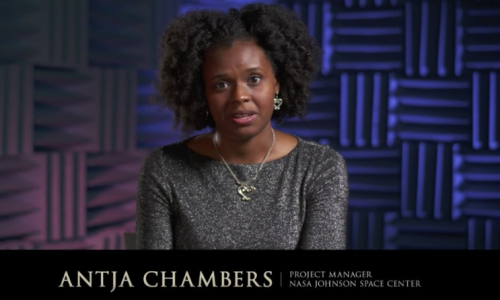
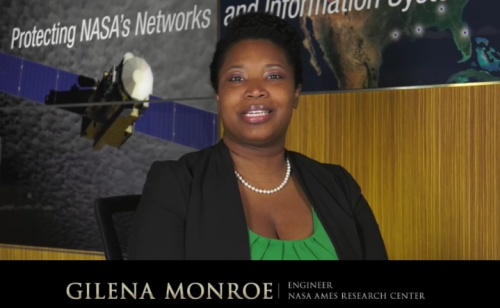
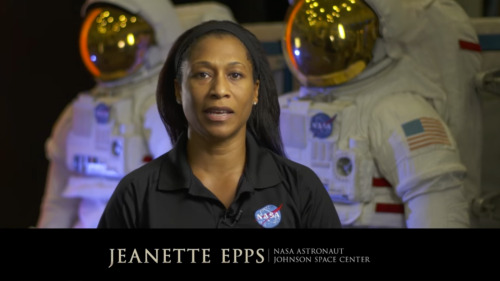
The film “Hidden Figures,” based on the book by Margot Lee Shetterly, focuses on the stories of Katherine Johnson (left, after receiving the Medal of Freedom in 2015), Mary Jackson and Dorothy Vaughan, African-American women who were essential to the success of early spaceflight. Today, NASA embraces their legacy and strives to include everyone who wants to participate in its ongoing exploration. “Progress is driven by questioning our assumptions and cultural assumptions,” NASA Administrator Charles Bolden says in a new video. “Embracing diversity and inclusion is how we as a nation will take the next giant leap in exploration.“
- Source
Let’s learn about today’s black heroes we all can look up to!
-
 iggy-spades liked this · 5 years ago
iggy-spades liked this · 5 years ago -
 pastelleclouders liked this · 6 years ago
pastelleclouders liked this · 6 years ago -
 psynicorn liked this · 7 years ago
psynicorn liked this · 7 years ago -
 elv-gray liked this · 7 years ago
elv-gray liked this · 7 years ago -
 dakatndahat liked this · 7 years ago
dakatndahat liked this · 7 years ago -
 freggg reblogged this · 7 years ago
freggg reblogged this · 7 years ago -
 freggg liked this · 7 years ago
freggg liked this · 7 years ago -
 funcoolmathgames reblogged this · 7 years ago
funcoolmathgames reblogged this · 7 years ago -
 eznemigaz liked this · 7 years ago
eznemigaz liked this · 7 years ago -
 achazsa liked this · 7 years ago
achazsa liked this · 7 years ago -
 thinymetisse liked this · 7 years ago
thinymetisse liked this · 7 years ago -
 mahajkhan liked this · 7 years ago
mahajkhan liked this · 7 years ago -
 ipunchedaswanonce reblogged this · 8 years ago
ipunchedaswanonce reblogged this · 8 years ago -
 uni-procrastination-station reblogged this · 8 years ago
uni-procrastination-station reblogged this · 8 years ago -
 hnm22 liked this · 8 years ago
hnm22 liked this · 8 years ago -
 musicisherworld-blog liked this · 8 years ago
musicisherworld-blog liked this · 8 years ago -
 oseuchi-chan liked this · 8 years ago
oseuchi-chan liked this · 8 years ago -
 gdarbz liked this · 8 years ago
gdarbz liked this · 8 years ago -
 cordedtitan-blog liked this · 8 years ago
cordedtitan-blog liked this · 8 years ago -
 tvdsupersherlokidwhovian reblogged this · 8 years ago
tvdsupersherlokidwhovian reblogged this · 8 years ago -
 tvdsupersherlokidwhovian liked this · 8 years ago
tvdsupersherlokidwhovian liked this · 8 years ago -
 tinylittlerambless reblogged this · 8 years ago
tinylittlerambless reblogged this · 8 years ago -
 disnerddoc99 liked this · 8 years ago
disnerddoc99 liked this · 8 years ago -
 thesherlokidwhovian liked this · 8 years ago
thesherlokidwhovian liked this · 8 years ago -
 keestops-blog liked this · 8 years ago
keestops-blog liked this · 8 years ago -
 2doctorvic reblogged this · 8 years ago
2doctorvic reblogged this · 8 years ago -
 explore-life-together-blog liked this · 8 years ago
explore-life-together-blog liked this · 8 years ago -
 adityanl liked this · 8 years ago
adityanl liked this · 8 years ago -
 handsovereyes liked this · 8 years ago
handsovereyes liked this · 8 years ago -
 asgard-in-the-tardis liked this · 8 years ago
asgard-in-the-tardis liked this · 8 years ago -
 chicken-a-la-mode reblogged this · 8 years ago
chicken-a-la-mode reblogged this · 8 years ago -
 chicken-a-la-mode liked this · 8 years ago
chicken-a-la-mode liked this · 8 years ago -
 rat-pappi liked this · 8 years ago
rat-pappi liked this · 8 years ago -
 beznikthecat liked this · 8 years ago
beznikthecat liked this · 8 years ago -
 kindawanttostudy-blog liked this · 8 years ago
kindawanttostudy-blog liked this · 8 years ago -
 neuronica reblogged this · 8 years ago
neuronica reblogged this · 8 years ago -
 ohgeanniemac liked this · 8 years ago
ohgeanniemac liked this · 8 years ago
A pharmacist and a little science sideblog. "Knowledge belongs to humanity, and is the torch which illuminates the world." - Louis Pasteur
215 posts













